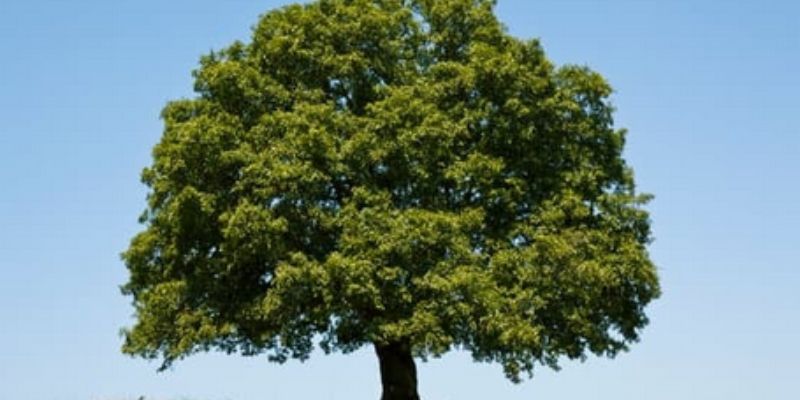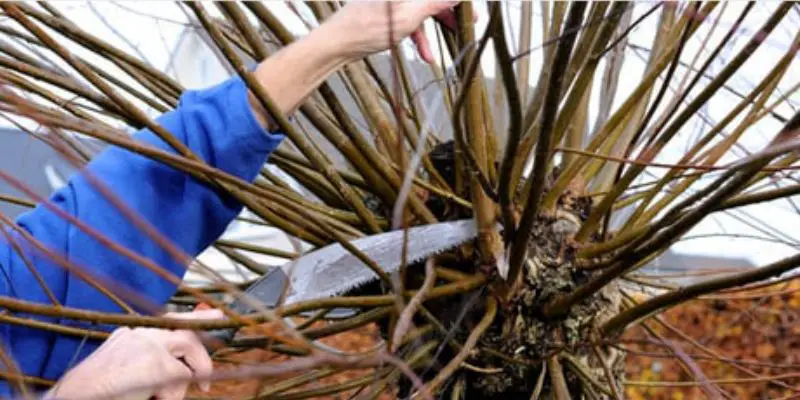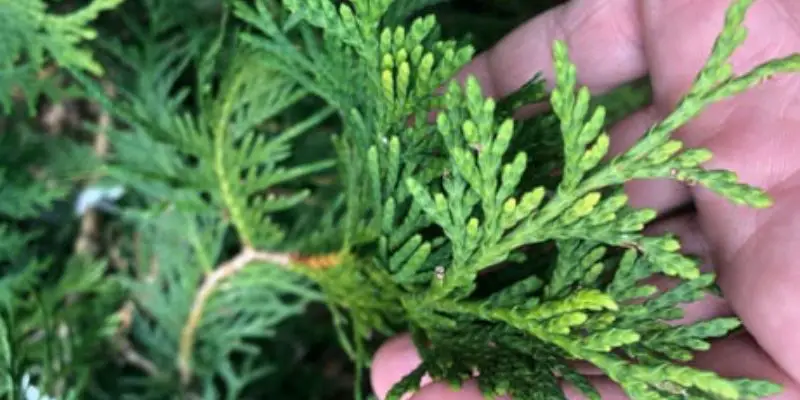With their majestic spreading canopies, live oaks make outstanding evergreen specimens in southern landscapes. However, their broad shape and aggressive growth habit require occasional pruning to maintain structural integrity, aesthetics, and health. By learning how to prune live oak trees, you can encourage their natural beauty while avoiding common issues.
Benefits of Pruning Live Oaks
Live oak trees are amazing to look at and have plenty of benefits. Their canopies are wide and keep your yard cool on hot days. Since they have leaves year-round, they add a consistent aesthetic to your yard even through the winter. However, they do need regular pruning, or else they will overtake the allotted space and face future health and structural dangers.
Regular pruning helps maintain live oaks in a way that allows them to thrive for centuries. By thinning out excessive lower branching and removing damaged or diseased parts, pruning establishes a strong structural framework. This gives the trees stability to withstand storms and harsh winds better. It also prevents the types of weak branch unions that are prone to failure.
In addition, pruning at a young age helps train live oaks to develop their trademark broad, horizontal branching habit without encroaching on walkways or covering windows. As mature specimens, pruning every 2-4 years keeps them contained to their allotted space without having to make severe cuts later.
The interior of the live oak’s lush canopy is also opened up through selective pruning. This admission of light and airflow is important for inner foliage to photosynthesize properly. It reduces instances of lower branches dying back that could indicate disease or decay setting in. Stimulating new growth through precision pruning also rejuvenates older trees.
Perhaps most notably, pruning live oaks removes congested branch patterns before structural problems or pest/disease issues arise. Old, dead wood is eliminated as a potential hazard. The trees are sculpted into shapes that are both aesthetically pleasing and allow clearance of buildings, power lines, and other structures beneath their widespreading branches.
In summary, proper pruning is an essential maintenance practice for live oaks’ long-term health, safety, and continued picturesque presence in the landscape. It enables these majestic trees to thrive gracefully for centuries to come.
When is the Best Time to Prune Live Oaks?
Pruning live oaks during their dormant winter season is ideal. The specific timing depends on climate:
- In warmer zones like Florida and costal areas, prune live oaks in late winter just before spring growth resumes. This avoids cutting away developing buds.
- In cooler inland climates, prune live oaks in early to mid winter after they have fully entered dormancy.
- Only make small touch-up prunes in early summer if absolutely necessary.
Avoid pruning live oaks from spring through fall when active sap flows could attract insects. For best results, stick to dormant season pruning.
Tools Needed to Prune Live Oak Trees
Having sharp, clean tools makes pruning live oaks easier and improves cuts:
- Bypass hand pruners for small branches under 0.5 inch diameter
- Bypass loppers for cutting larger branches up to 1.5 inch diameter
- Curved pruning saws to remove thick limbs and cut close to the trunk
- Pole pruners and saws to reach high branches from the ground
- Disinfecting wipes or spray to sanitize tools before each tree
- Tarps and ropes for lowering cut branches
- Ladder or lift equipment for safely reaching high portions of large trees
With the right implements, you can precisely prune live oaks without harming the remaining tree.
How to Prune Live Oak Trees – Pruning Young Trees
Pruning live oaks while young is critical to develop proper structure and shape. Here are tips:
Step 1. Select Central Leader
Choose one main upright branch to retain as the central leader. Remove competing vertical shoots.
Step 2. Space Main Branches
Select 3-5 large scaffold branches evenly spaced around the trunk. Remove branches crowding or crossing these key scaffolds.
Step 3. Establish FORM
Prune to establish an open vase, goblet or umbrella form suited to available space.
Step 4. Limit Height
Prune back the central leader by 25% after the first year and 50% after the second year to encourage lateral branching.
Step 5. Head Back Vigorous Shoots
Cut fast-growing upright shoots back by 6-12 inches to slow upward growth.
Step 6. Remove Inside Branches
Prune out small interior limbs to allow light penetration and air circulation.
With early structural pruning, young live oaks establish desirable shapes.
How to Prune Live Oak Trees – Pruning Mature Trees
Pruning requirements change as live oaks mature. Follow these tips:
Step 1. Remove Deadwood
First priority is removing all dead, dying, and diseased branches back to healthy tissue.
Step 2. Reduce Height and Spread
Cut back excessively long lateral branches and any branches extending out too far.
Step 3. Thin Congested Areas
Selectively remove whole branches in crowded areas to improve light and air penetration.
Step 4. Shape Canopy
Prune to maintain or restore the tree’s natural shape. Refine the outline for visual appeal.
Step 5. Cut Back Remaining Long Shoots
Trim fast-growing shoots not previously removed by 1/3 to 1/2 their length to encourage branching.
Step 6. Clean Cuts at Branch Collar
Make final cuts just outside the branch collar without leaving stubs.
With correct pruning cuts, live oaks retain their grandeur for generations.
Pruning Cuts to Use on Live Oak Trees
Making proper pruning cuts is critical for best wound closure on live oaks:
Branch Collar Cuts:
Make pruning cuts just beyond the branch collar, the swollen area where a branch joins a larger limb or trunk. This preserves the protective branch bark ridge.
Thinning Cuts:
Thinning cuts selectively remove whole branches back to their point of origin on a larger limb or the main trunk. Use primarily on live oaks to reduce congestion.
Reduction Cuts:
Reduction cuts shorten limbs back to a smaller side branch or bud. This technique encourages new growth farther out on the limb.
Heading Cuts:
Heading cuts shorten limbs and shoots back to a bud or node without removing the main stem. This stimulates shoot growth below the cut.
By matching cut types to pruning objectives, you can maintain live oaks’ forms.
How to Prune Damaged Live Oak Trees
Harsh weather, old age, and other factors can damage live oaks. Here are tips for repair:
1. Remove any completely broken branches back to the trunk or major branch junction using proper branch collar cuts.
2. For cracked and partially broken branches, prune back to just above the break if possible to preserve some foliage.
3. Use reduction cuts to shorten over-extended branches that make the tree lopsided or unbalanced.
4. Monitor for pests after storms and prune away infested wood. Prevent spread with disinfected tools.
5. Avoid excessive overall pruning of storm damaged trees. Instead, prune lightly over successive years as they recover.
With careful assessment and selective repair pruning, injured live oaks can make full comebacks.
Common Live Oak Pruning Mistakes
It’s important to avoid these errors when pruning live oaks:
- Topping trees or excessive crown reduction pruning
- Removing too much inner foliage which can cause sunscalding
- Excessive pruning invigorates regrowth and unnecessary enlargement
- Failure to prune early leads to costly correction pruning later
- Not using clean, sharp tools which harms tissue
- Pruning in spring or summer which stresses trees in active growth
- Leaving branch stubs provides entry points for pests/disease
- Overpruning storm damaged trees delays recovery
With the right approach, live oak pruning encourages health rather than harming trees.
Pruning Old, Overgrown Live Oaks
Neglected live oaks often outgrow their space and develop hazardous, congested branching. Here is how to prune and restore old trees:
- Clear brush and debris from the base to assess scope
- Remove all dead, broken, and diseased wood
- Reduce tree height by cutting back lateral limbs up to several feet
- Thin interior branches and foliage up to 30% to allow light and air
- Shorten long heavy horizontal limbs showing weakness using reduction cuts
- Shape remaining crown into a suitable form removing crossing branches
- Monitor for stress and water actively after extensive pruning
With gradual renewal pruning over years, old neglected live oaks can be revitalized.
Conclusion
While live oak trees require only occasional pruning to maintain their structural integrity and picturesque forms, it is a critical maintenance practice. By pruning live oaks while young to establish good structure and practicing regular pruning cuts in adulthood before issues emerge, the splendor of these majestic evergreen trees can persist for hundreds of years. With the proper tools, techniques, timing and care, the live oaks on your property can remain aesthetically pleasing assets providing beauty and shade for generations to come.
Frequently Asked Questions on How to Prune Live Oak Trees
Here are answers to common live oak pruning FAQs:
How much of a live oak canopy is safe to prune at one time?
Limit overall pruning of a healthy live oak to a maximum of 30% of the canopy in a single season. This prevents excessive stress on the tree.
How often should I prune an established live oak tree?
Typical pruning frequency is every 2-4 years. Annual light touch-up pruning can keep fast growers in check.
Should I prune live oaks to reduce acorn litter?
No, acorn production is not strongly affected by pruning. Focus pruning on structural needs, not fruit litter reduction.
What is the best way to dispose of live oak pruning debris?
Chipping pruned branches for mulch is recommended. If disease is present, debris should be burned, buried or removed in approved containers.
Can I prune live oaks myself or do I need a professional arborist?
Homeowners can prune small live oaks under 30 feet. Larger trees, high branches, and potentially dangerous pruning is best left to certified arborists.
How long does it take live oak pruning cuts to seal?
Live oaks compartmentalize wounds quickly. Flush pruning cuts typically seal within several weeks in warmer months if branches are pruned correctly.

Michael Glenn is a certified arborist and horticultural expert with over 15 years of experience in the landscape industry. His passion for plants and trees has led him to become a sought-after authority on pruning and trimming techniques. Glenn’s in-depth knowledge of proper pruning methods, timing, and tools has helped countless homeowners and professionals maintain healthy, aesthetically pleasing gardens and landscapes.
In addition to sharing his pruning expertise through practical tips, step-by-step guides, and expert advice, Glenn is also a respected author of pruning tool buying guides. His comprehensive reviews and comparisons ensure readers can make informed decisions when investing in quality loppers, pruning shears, saws, and other essential equipment. With a deep understanding of plant biology and sustainable practices, Glenn’s writing empowers audiences with the knowledge needed to properly care for green spaces.





